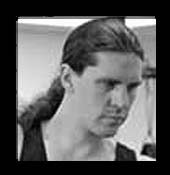 Sifu Alon Peterson was born in San Francisco, CA. His family then moved to Montana where he spent the next 16 years of his life. He became fascinated with martial arts at a very young age.
Sifu Alon Peterson was born in San Francisco, CA. His family then moved to Montana where he spent the next 16 years of his life. He became fascinated with martial arts at a very young age.
First he pursued the art of Shotokan Karate with several different local instructors, for about 10 years. In 1996 Sifu Alon moved to Malibu, CA for college, studying Computer Science at Pepperdine University. Here in California, Sifu Alon studied Tae Kwon Do as well as an eclectic system dubbed Sei Ei Do for 4 years until the year 2000, earning two black belts.
Sifu Alon came to Traditional Wing Chun with a mission to learn how to become effective with close-in, hand-to-hand fighting. He trained diligently at the Los Angeles Traditional Wing Chun Kung Fu Academy under Master Joseph Sayah, teaching classes within 2 years, and reaching instructor level by the year 2005. When the time came for Master Sayah to return to his home in Australia, he passed on the Academy and its future to Sifu Alon.
While teaching, Sifu Alon worked security for many of L.A.'s most popular night clubs and as a self-defense instructor for a California personal security firm. In the year 2006, Sifu Alon was awarded his Level One Provisional Master Level Red Sash.
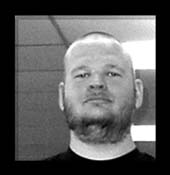 Sifu Joel Douthit came to Traditional Wing Chun in the year 2000 and trained diligently at the Los Angeles Traditional Wing Chun Kung Fu Academy under Master Joseph Sayah, the youngest Red Sash Master of Wing Chun in the world. Sifu Joel is a native of Boise, Idaho and has a college background in Computer Science.
Sifu Joel Douthit came to Traditional Wing Chun in the year 2000 and trained diligently at the Los Angeles Traditional Wing Chun Kung Fu Academy under Master Joseph Sayah, the youngest Red Sash Master of Wing Chun in the world. Sifu Joel is a native of Boise, Idaho and has a college background in Computer Science.
Sifu Joel was teaching classes by 2003, and became a certified instructor in 2005. When the time came for Master Sayah to return to his home in Australia, he passed on the Granada Hills Academy and its future to Sifu Joel.
He also worked as a bouncer for many of L.A.'s most popular night clubs and as a self-defense instructor for a California personal security firm. Sifu Joel has since relocated back to Idaho where he continues to pursue his Wing Chun training.
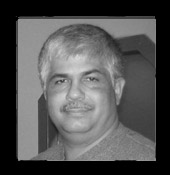 Sihing Anthony Canales has been a student of Martial Arts since 1976, hailing from California. With backrounds in shorin ryu karate, aikido, escrima, JKD, arnis, kali, silat, and yang family tai chi chuan, Anthony is a Certified Instructor with the National Tai Chi Chuan Association under the auspices of the late Dr. Marshall Ho'o.
Sihing Anthony Canales has been a student of Martial Arts since 1976, hailing from California. With backrounds in shorin ryu karate, aikido, escrima, JKD, arnis, kali, silat, and yang family tai chi chuan, Anthony is a Certified Instructor with the National Tai Chi Chuan Association under the auspices of the late Dr. Marshall Ho'o.
Anthony is currently a black sash-ranked student under the instruction of Sifu Alon Peterson, with a goal to obtain his gold sash in the future.
 Sihing Naomi is an Instructor in the kids training program as well as our wellness program director.
Sihing Naomi is an Instructor in the kids training program as well as our wellness program director.
Naomi is a native Californian who became interested in Martial Arts as a child. Her uncle Master Richard Moton was a prize winning fighter in the 70s and 80s and a Master Instructor in the Kempo style of Karate. She trained with her uncle as a child and up into her teen years, winning many tournaments in California and in Washington state.
Naomi came to Wing Chun Kung Fu in 2004 for practical self-defense training . She has been training diligently under Sifu Alon Peterson. She currently holds a black sash and is working on her advanced training. Her confidence level and fighting ability has progressed immensely and we are proud of her efforts and progress.
She is a volunteer for the Young Martial Artist Foundation and devotes a great deal of time and energy to helping children benefit from martial arts.
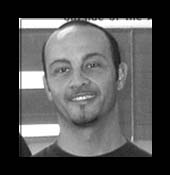 Master Joe Sayah was born in Melbourne, Australia on October 19th, 1972. He began training Wing Chun Kung Fu at age nine under Grandmaster William Cheung. When he was 17, Master Joe became a certified instructor under Grandmaster Cheung.
Master Joe Sayah was born in Melbourne, Australia on October 19th, 1972. He began training Wing Chun Kung Fu at age nine under Grandmaster William Cheung. When he was 17, Master Joe became a certified instructor under Grandmaster Cheung.
For the next five years he trained full time and completed the Iron Palm and Iron Shin training programs. At age 22, Master Joe began competing in competitions including K1 kickboxing and Cage no-holds-barred matches. He also travelled with Grandmaster Cheung to assist in seminars around the world. He is currently Wing Chun's youngest red sash Master.
In the last ten years, Master Joe has worked as a bodyguard for foreign presidents, members of the entertainment industry, and high profile business executives. In the past five years he has conducted numerous seminars with armed forces and law enforcement agencies including the U.S. Navy Seals, C.I.A., F.B.I., and local police departments.
Master Joe has starred in a number of Hong Kong movies including Jackie Chan's Mr. Nice Guy, and Jet Li's Once Upon A Time In China (Part 6) where he played the main villain. He also assisted Sammo Hung in the choreography of the final fight scenes between Jet Li and himself, which lasted eight minutes on screen.
He has also been featured in a multitude of magazine publications including Inside Kung Fu, Blitz, Blackbelt, and Ralph. Since moving to Los Angeles, Master Joe has opened 3 schools. He, along with many others, are working toward the goal of uniting Wing Chun schools aroung the world. He has since moved back to Australia and is running another successful school in his hometown of Melbourne.
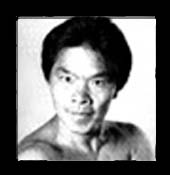 Grandmaster William Cheung has been called the Masters' Master; he was considered by Bruce Lee to be the "ultimate fighter": William Cheuk Hing Cheung was the sole inheritor of the Traditional Wing Chun Kung Fu system, and was the person responsible for introducing Bruce Lee to Wing Chun Kung Fu.
Grandmaster William Cheung has been called the Masters' Master; he was considered by Bruce Lee to be the "ultimate fighter": William Cheuk Hing Cheung was the sole inheritor of the Traditional Wing Chun Kung Fu system, and was the person responsible for introducing Bruce Lee to Wing Chun Kung Fu.
In 1951, at the age of ten, Cheung started his training in Wing Chun Kung Fu under the late Grandmaster Yip Man. From 1954 to 1958 Cheung was a live-in student of Grandmaster Yip Man. It was during this time that he inherited the complete system of Traditional Wing Chun Kung Fu.
Between 1957 and 1958 Cheung won the Kung Fu elimination contests in Hong Kong, defeating opponents with many more years' experience. In early 1954 Cheung introduced Bruce Lee to Grandmaster Yip Man, and became his personal trainer. Throughout the four and a half years the two men developed a very close friendship, and Cheung passed on to Bruce Lee most of his techniques and helped develop his overall confidence and experience in fights. In later years he was to use these techniques in competitions, and also in his movies.
From 1959 when he arrived in Australia to pursue his academic studies, Cheung organized small informal groups interested in martial arts. However, the death of his master, Yip Man, in 1973 marked a turning point in his life. He decided that the traditional taboo placed on the teaching of Wing Chun to non-Chinese was anachronistic and unjustifiable xenophobia. Accordingly, he formed the first Wing Chun Kung Fu school in Australia in which the full extent of this Chinese art was taught to students of both Chinese and non-Chinese extraction.
Cheung was appointed as Chief Instructor to the U.S. Seventh Fleet based in Yukosuka, Japan, during 1978 to 1980. Throughout this time, he was in charge of the intensive mental and physical development program of close quarter hand to hand combat for the marines.
Many of Cheung's students have achieved international recognition for their martial arts prowess. In 1982 his students won the heavyweight and middleweight divisions respectively in the World Invitation Kung Fu Championships held in Hong Kong. Furthermore, Cheung himself, in 1983, was inducted into the "Black Belt Hall of Fame" as Kung Fu Artist of the Year and again in 1989, into the "Inside Kung Fu Hall of Fame" as Martial Arts Instructor of the Year.
From 1979 Grandmaster Cheung and many of his juniors conducted special programs for special law enforcing officers and special operation groups in the Armed Services in U.S.A. and other countries, teaching unarmed combat, restraining and disarming assailants and a fire arm retention program.
It was at the Harvard University, Boston, in 1984 that Grandmaster Cheung set the world speed punching record of 8.3 punches per second .
Cheung has authored a variety of books for the general public including "Wing Chun Bil Jee", "Wing Chun Butterfly Swords", "Wing Chun Dragon Pole", "Advanced Wing Chun", "How to Develop Chi Power", "Wing Chun Kung Fu" (in French), "A Comparison of Wing Chun and Jeet Kune Do" Volumes I and II. He has also produced a number of videos, including the well-known "The Wing Chun Way", "Tao of Wing Chun" and "PRO-TEKT: A Personal Protection Program".
In recent years, Cheung has been extensively involved in conducting workshop seminars for various groups in different countries around the world throughout North America, Europe, and Asia.
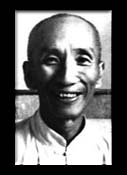 At the time of his death in 1973, Yip Man could not have imagined that his name would be remembered among those of the most distinguished international grand masters in the annals of martial arts history: Dr. Jigoro Kano, Gichin Funakoshi, Moriehi Uyeshiba. Yip Man's name belongs on that list of immortals.
At the time of his death in 1973, Yip Man could not have imagined that his name would be remembered among those of the most distinguished international grand masters in the annals of martial arts history: Dr. Jigoro Kano, Gichin Funakoshi, Moriehi Uyeshiba. Yip Man's name belongs on that list of immortals.
As the rightful patriarch of the Wing Chun style of kung fu, he succeeded in spreading his obscure but dynamic fighting art first throughout the British Crown Colony of Hong Kong and then throughout the world.
His teaching has become a cornerstone of the modern martial arts era. The bare-boned efficiency of his fighting techniques, coupled with the knowledge that he was Bruce Lee's instructor, caused millions to regard his art with awed curiosity. Wing Chun means magic to them. Throughout the world, wherever instruction is not readily available, martial artists have at least attempted to imitate the subtleties of the art's sticking and trapping techniques.
Today Wing Chun is the most influential martial art to emerge from 20th century China.
Unfortunately, the art did not achieve international acclaim during Yip's lifetime, so he did not foresee the need publicly to name an heir to his role as leader of the Wing Chun clan. He still held and transmitted much of his art through vows of secrecy. Now that more than two decades have passed since his demise, many glory-seekers will invent intricate tales, misrepresent Yip photographs, and literally fight for the right to become known as his personal disciple and heir. Dozens of second and even third generation practitioners have advanced such counterfeit claims ... a bizarre phenomenon once the facts are revealed that Yip Man did not begin teaching until after his 50th birthday, that he did not like to teach and that he rarely did so.
Yip Man was born in the year 1898 in the town of Fatshan in Namhoi County, Kwangtung Province, in Southern China. He was the son of a wealthy merchant named Yip Oi Doh and his wife, Madame Ng. As is still the custom, businesses and corporations in China were often built around family groupings of fathers, sons, sons-in-law, cousins, uncles, granduncles and grandfathers. The Yip family was no exception. Collectively, they owned a large farm and a merchandise exporting business which played an important role in bringing domestic renown to fabrics made from the Fatshan silkworm.
The Yip family lived in some 20 old-style Chinese estates which lined both sides of Happiness and Scholarship Avenue. On one side of the avenue, in the centre of the estates, stood the Yip ancestral temple. Inside the temple, the Yip family permitted Wing Chun master Chan Wah Shun to live and teach a small group of disciples, since Chan's local reputation as a fighter discouraged thieves and highwaymen from attacking the family business.
As a boy Yip Man was tutored in the traditional Chinese classics. He was forced to memorize ancient poems and Confucian philosophy, to learn to paint as well as to write his own poems. But whenever he could escape from the surveillant eyes of his tutors, he would wander over to the ancestral temple and watch Chan Wah Shun drill his disciples in the ways of Wing Chun. Soon the boy's visits became more regular until, finally, when Yip was about nine years old he approached Chan and asked to be accepted as a student.
Chan did not take the boy's request seriously. Chan Wah Shun was about 60 years old at the time, and most of his students were already over 30. Besides, many wealthy families of the day did not want their sons' attention drawn away from academic pursuits by the practice of kung fu, especially after the Boxer Rebellion fiasco in 1900.
So to spare the boy's feelings, Chan diplomatically told Yip that he would admit him as a student as soon as he could pay the tuition price of three taels of silver. Chan did not think that a nine year old boy, from a wealthy family or not, could produce that much money anytime in the near future. But when Yip Man returned the next day he went up to Chan Wah Shun with 300 pieces of silver. That was a lot of money! You could have bought a good-sized house in those days for 300 pieces of silver.
But Chan Wah Shun did not simply accept the money. Instead he thought that this little kid had just pinched 300 pieces of silver to give to him. So he took Yip Man to his parents to try to find out where the silver had come from.
Then they realized that the 300 pieces of silver were his whole life savings. So once they saw that this boy had such a strong desire to learn Wing Chun that he'd given away all his money, his parents agreed to let him study. And Chan Wah Shun accepted him.
Yip Man became the last of Chan's 16 disciples. He also became the youngest in a direct line of Wing Chun practitioners dating back nearly 200 years to the art's fabled beginnings at the original Shaolin Temple in Hunan Province.
Yip Man studied with Chan Wah Shun for four years, until the old master's death. Yip subsequently spent another two and a half years training with his senior, Ng Chung So, and Ng's two students, Yuen Kay Shan and Yiu Choi. Sometimes they would strap on jackets padded with horse hair and feathers and spar with full-contact techniques directed to the body. Apparently young Yip developed a passion for realism during these early sparring sessions.
When Yip was 16 years old, his parents sent him to Hong Kong to attend St. Stephen's College. There, he quickly fell in with a clique of classmates who liked to offer and accept kung fu challenges. He welcomed the opportunity to put his Wing Chun training to the real test.
Within a short time, he developed a reputation as a superlative fighter. He had stood up to hard stylists and soft stylists, to instructors and students, and even to a foreign devil or two. Yet despite his small five foot, 120 pound frame, never once had he lost.
Yip discovered, in fact, that he liked to fight. He would accept a challenge on the slightest provocation. On one such occasion, a classmate named Lai dared Yip to go after an old kung fu practitioner who worked at the silk company of Lai's father. The man was well into his 50s and very eccentric, but, Lai insisted, his kung fu was very good.
That evening Yip Man found the man living on a fishing boat anchored near the typhoon breakers in Hong Kong Bay.
"Hey, old man!" yelled Yip.
The old man did not answer.
Yip Man picked up a stone and threw it in the man's direction. "Hey, old man!" he yelled once more.
"What do you want, youngster?"
"I've heard that you are a great kung fu master and I've come here to find out. I'd like to spar with you."
No answer.
"Old man," Yip said again, "I'd like to spar with you."
The man stood silent. He stared into Yip's eyes, then moved his gaze up and down the boy's length. "I don't know, youngster," he said at last, stroking his chin. "You look pretty puny. I might be wasting my time. I'll have to see you do a form first."
This request irritated Yip Man. "All right, old man," he said, dropping into a pigeon-toed horse stance. "Watch!"
Yip performed the entire Shil Lim Tao form of Wing Chun, with its long isotonic motions which always seemed punctuated by a sudden combative pop.
The old man smiled. "Okay, youngster. Come on board. We'll spar."
No sooner had the two squared off than Yip Man raced after the old man in a blaze of punches. The old man met Yip's attack, stepped to the side, then ... SPLASSSHHH!
The old man looked down at Yip in the waters of Hong Kong Bay. "What's the matter, youngster?" he said. "I thought you wanted to spar!"
Yip climbed out of the bay, onto the dock, and back onto the boat. "Don't worry, old man," he said. "I'll show you sparring!": He launched after the old man, a jet on takeoff. A few techniques were exchanged at a furious pace, then ... SPLASSSHHH!
"Hey, youngster! Do you want to spar or do you really want to swim?"
Yip Man could not understand what had gone wrong. He had done so well against other supposed 'masters', but he didn't even know what this guy was doing.
Yip began to visit the old man at every opportunity. He would bring him wine and roast duck. Sometimes he would wash the man's clothes, then leave. But not a word was spoken between the two.
After about a month, the old man confronted Yip. "Look, youngster," he said, "I know that you are a Wing Chun practitioner. And I know that you aren't bad. I also know that you show me all this kindness because you want to learn from me ... Well, okay, I'm going to teach you, rather than let the art pass away. You see, I too am a Wing Chun practitioner. My name's Leung Bik. I am the son of your teacher's teacher."
Yip Man studied with Leung Bik for two and a half years. Meanwhile he continued to accept challenges. During one encounter, he badly injured his opponent. The police threatened to prosecute, so Yip fled to Japan for a year until the commotion had subsided.
When Yip Man finally returned home to Fatshan to take a wife and assume his responsibilities in the family business, he was only 20 years old, but already a Grandmaster of Wing Chun. He lived a leisurely life there, practicing Wing Chun with either a few select students or on the wooden dummy he kept in his flower garden, until the Communist takeover in 1949. He subsequently fled to Hong Kong, penniless, where he spent the remainder of his life teaching. Today, 90 percent of Wing Chun schools in the world can be traced directly to his efforts.